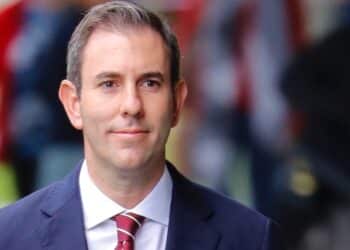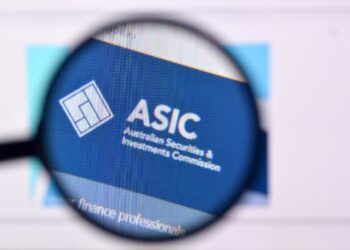Speaking at a Financial Advice Association Australia (FAAA) roadshow in Sydney on Friday, FAAA general manager policy, advocacy and standards Phil Anderson noted that the government is falling short of its commitments to the Compensation Scheme of Last Resort (CSLR).
“The 10 largest financial institutions in Australia have had to pay $241 million for losses incurred with claims that were submitted up to 7 September 2022. They have every right to be grumpy, possibly more grumpy than we do, but they have bigger pockets to pay for it,” Anderson said.
“That second period is the period that the government is responsible for, but it was squeezed into just three months. It was just impossible for AFCA to process all of the post-7 September 2022 complaints in order for them to be finalised and paid out before the 30th of June. So, that meant that the government only ended up having to pay $4.8 million.”
Even more startling than the disparity in dollar terms, with advisers and the broader participants in the scheme projected to pay $24.1 million for the 2024–25 year, the government is also covering just one claim related to Dixon Advisory during its three-month window.
“When you look at it in detail from the Dixon Advisory perspective, the 10 largest financial institutions have to pay for 1,638 of them. On the basis of the last numbers that we’ve seen, there’s 310 more. The government’s paying for one of them,” Anderson explained.
“You will have to pay for 309 of them, although that won’t come necessarily in the 24–25 year, we can see that it will roll out for a few more years, particularly if membership of Dixon Advisory remains open, that could be quite a period of time.
“If you have a look at the split of costs, the government is paying $92,000 for Dixon Advisory complaints as opposed to advisers, who are paying over $9 million in that first year, and you’re also paying $6 million in CSLR operating costs. And in large part, that’s because of the 1,638 Dixon complaints that still have to be processed.”
Also speaking at the roadshow in Sydney, FAAA chair David Sharpe said the CSLR could “devastate our profession”.
“We’re advocating for it to not be retrospective. We’re advocating for a large corporate not to simply be able to walk away from a subsidiary, so individual advisers like you and I are footing the bill,” Sharpe said.
“It can’t be the compensation scheme of first resort, purely because it’s too hard to chase the money. I’m sick of being an ATM – an adviser teller machine – and every time there’s a bill, we’re the ones who have to fork it out.”
Anderson added that, given the number of clients that have yet to make a claim against Dixon and its ongoing membership of the Australian Financial Complaints Authority (AFCA), there is still the possibility of more pain for advisers.
“The administrator’s report in November of 2022 set out some detail. It said there were 4,606 clients who had a valid complaint with respect to losses that they had incurred on the URF fund, and on a raw basis $368 million,” he said.
“That’s raw because it doesn’t include lost investment earnings that they would have made if their investment had been appropriate. Now, why this is important is because the administrator’s report says 4,606, but we know from what AFCA have said publicly is only 1,948 have actually complained to this point and, whilst membership of Dixon Advisory with AFCA is still open, there’s 2,658 of them who can still complain.
“This is incredibly retrospective, you will continue to pay for them as long as [clients] keep complaining.”




I am so sad I left this industry in 2021 it has become so much better since then lol
The worst part about all this is the only reason Dixons became so bad, is ASIC failed to do their job. ASIC chooses to indiscriminately persecute all advisers, including the honest majority, rather than protecting consumers from clear and obvious harmful behaviour.
The government should be funding all the Dixons claims, in recognition of ASIC’s failure. The government should also be completely overhauling ASIC, to fix their incredible incompetence and bias.
If this isn’t the epitome of discriminatory persecution against advisers, then what on earth is ??
It is without foundation or justification on every single level that existing advisers are left with a current and future debt attributed to retrospective conflicted advice by Dixons.
So, a group of medical professionals all band together to knowingly provide conflicted services and poor medical advice to a large number of patients that ultimately fails and leaves those patients substantially worse off…………does every practising medical professional now have to pay for the practices of rogue former operators….NO…….that’s why they have Professional Indemnity Insurance and why isn’t Dixon’s PI covering the failings of these practices ?????
None of this ads up.
The adviser levy is $50m – $60m annually
The AFCA awarded remediation is around $100,528,522
All AFSLs are required to have PI cover + run off cover
ASIC collections raised for the Commonwealth were $1.8 BILLION ($1,834,550,000)
Where is all this money going?
What’s ASIC Paying for Dodgy Dixon’s ? = $ NIL
And even better they Double Dip and whack Adviser more via the ASIC Levy for Dixon’s investigations.
ASIC WERE WARNED OF DODGY DIXON’S MIS FOR A DECADE AND DID NOTHING.
Now ASIC / Govt are forcing Advisers to pay for their incompetence.
ASIC SHOULD BE PAYING VIA GOVT.
Any intelligent adviser or industry professional not connected with Dixon Advisory knew they were conflicted/bad operators 10 years ago. Why ASIC didn’t just launch and enforceable undertaking before things got so bad just shows how impotent the regulators are. Vertical integration = disaster for consumers. Wait until the industry funds start handing our poor/conflicted advice. It will make this scandal look like child’s play.
And then the levies will be even higher.